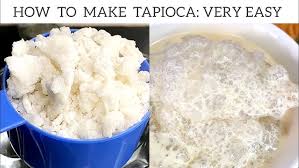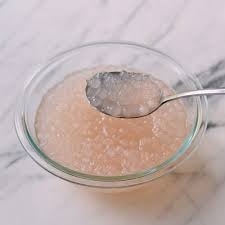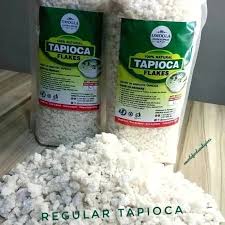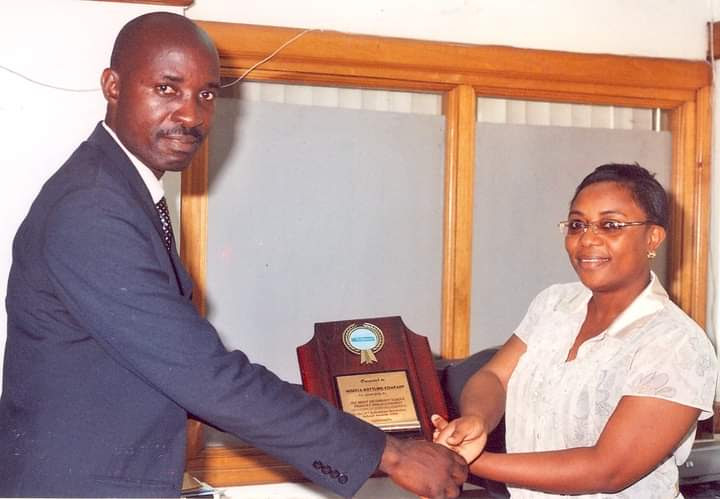![]()
If you’ve landed on this article page, you’re probably searching for a
good business idea—an idea that’s light on the pocket but heavy on
returns, promising both a fulfilling journey and potential profit.
|
How to Start Tapioca starch Production
in Nigeria
Tapioca starch is a kind of starch extracted from tapioca.
Tapioca starch manufacturing process takes tapioca as the raw
material, through grinding the washed tapioca into slurry,
separating the impurities in starch slurry and drying the starch
to get final edible starch. With advanced tapioca starch
processing machine, the whole process is completed less than
half an hour.
Tapioca is the white starchy extract from cassava. it’s
fermented, flaky version is the garri we all know. It’s a staple
food in some parts of Nigeria and it has similar consistency
with pap, from the way it is prepared to the way it is eaten,
though its physical appearance looks more like it has got round,
clear starch bubbles in it.
The starch-water mixture, called “Starch milk”, is allowed to
settle for 6-7 hours and the water is drained off until a thick
slurry is left. This slurry is then either purified further with
more water then dried to form the flour. The additional washing
of the slurry is important to remove residual insoluble fibre
and, more importantly, cyanide-related toxins naturally found in
the cassava. Traditional cultures dried the slurry on basketwork
trays, but it is more efficient to do it in an oven at low
temperature with regular raking and turning. The dried starch
would then be sifted and used for cooking.
The following is the detail introduction of tapioca starch
manufacturing process
.Raw material receiving unit: The raw material receiving unit is
the first step in tapioca starch manufacturing process. The main
purpose of this unit is to remove the preliminary impurity of
cassava and store it in the raw material storage and in the
hopper. The tapioca is weighed on a weighing scale and hauled to
a cassava yard, where it is transported by forklift to a cassava
storage hopper.
.Raw material transportation and cleaning unit: The cassava
stored in the cassava hopper is transported to dry sieve through
the conveyor belt, where the impurities such as sand and gravel
mixed into the raw materials during harvesting are removed in
tapioca starch manufacturing process.
.Raw material washing unit: Clean raw materials play an
important role in potato processing, washing unit is an
important step in the pretreatment stage in tapioca starch
manufacturing process. This unit is to remove the sand, dirt and
slag from cassava completely. Cassava is transported into the
paddle washing machine which adopts the principle of
counter-current washing principle to achieve the washing of
tapioca.
Then the tapioca is stored in temporary clean silo for storage
in tapioca starch manufacturing process. The volume of the
temporary clean silo is generally designed to be capable of
storage for half an hour of production.
Starch slurry desanding unit: The grinded starch slurry is
pumped into the desanding cyclone through a screw pump. The sand
in slurry is discharged in tapioca starch manufacturing process
to ensure the taste of final starch. The specially manufactured
ceramic cyclone pipe is durable, and the specially designed air
bag valve can automatically discharge the sand at regular
intervals.
Concentration and refining unit: Concentration and refining is
another important unit in tapioca starch manufacturing process.
The quality of starch is guaranteed by the cyclone refining
unit. The multi-stage hydrocyclone station can ensure the
washing effect, better remove the impurities such as fiber and
protein contained in the starch milk, and ensure that there is
no impurity in the starch milk coming out from the cyclone
station. The starch milk from the cyclone station is pumped into
a stainless steel starch milk storage tank with a stirrer.
.
Drying and packing unit: The dehydrated starch is further dried
to the required moisture content of commercial starch in tapioca
starch manufacturing process. Flash dryer is a high efficient
starch drying machine which can dry the starch in 2-3
seconds.After drying, the moisture content is about 14%. Then
the starch is packed into 25-50 kg per bag by automatic
packaging machine.
Get our Practical Training guide on how to start a lucrative
Tapioca Production Business. The path to success in the tapioca
production business requires careful planning and execution.
From conducting market research to setting up a processing
facility and implementing a solid marketing strategy, there are
crucial steps you need to follow to ensure a successful launch.
This checklist will guide you through the 9 essential steps to
open your tapioca production business and establish a strong
presence in the market.
Whether you are looking to secure funding, build relationships
with suppliers, or navigate the regulatory landscape, this
comprehensive guide will provide you with the necessary tools
and strategies to kickstart your tapioca production business and
turn your entrepreneurial vision into a profitable venture.
|







